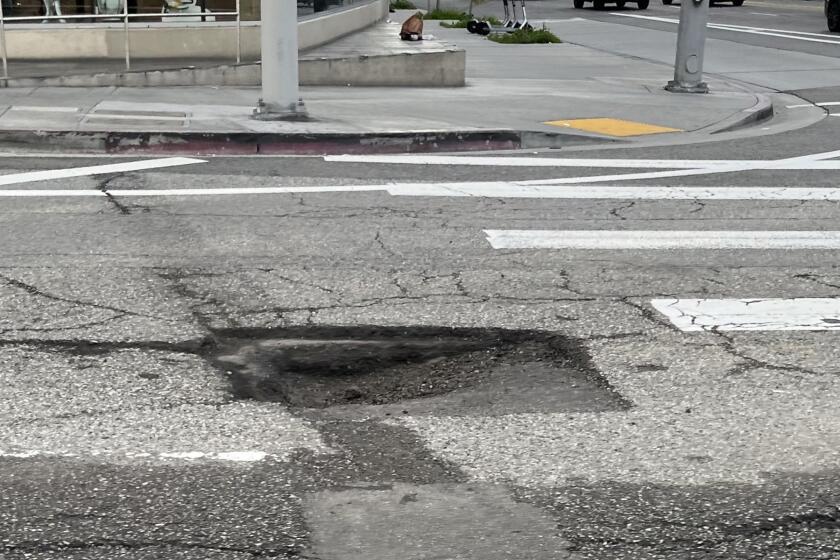Express Lanes Best for Freeway
- Share via
Motorists on the traffic-choked Costa Mesa Freeway between the San Diego and Riverside freeways have been eyeing with eager anticipation the two new lanes, one in each direction, that are being created by restriping the lanes and eliminating most of the median space.
The California Department of Transportation still has some work to do, but it won’t be long before the new lanes are open to traffic. What must first be decided is how they will be used.
Transportation officials have two choices. They can open the new lanes to all traffic, or designate them as express commuter lanes for the exclusive use of car and van pools and buses. The decision will be made soon.
Caltrans last Thursday night held a hearing in Tustin on the widening project’s environmental impact report. The Orange County Transportation Commission, which must give local approval for any use, is scheduled to make its decision Oct. 14. And on Tuesday, a commission-appointed citizens committee composed of representatives from cities along the route is supposed to submit its recommendation.
Early indications are that the commission and its advisory committee may be leaning toward commuter rather than general purpose use. That would be the right thing to do. Caltrans thinks that would be the most sensible and productive use of the new lanes. The success of such lanes on the San Bernardino and Artesia freeways has led us to the same conclusion.
The purpose of this project was to increase the capacity of the freeway, moving more people in less time. A commuter lane does that the best.
The El Monte Busway on the San Bernardino Freeway in Los Angeles carries more people per hour in the rush hours than the other four lanes of the freeway combined, transit officials report. And the Artesia Freeway commuter lane, which opened last June and only carries traffic one-way on an eight-mile stretch between Carson and the 605 interchange, has recorded significant reductions in travel time while carrying more people per hour. What was once at least a 30-minute drive has been reduced to less than 10 minutes in the express lane and between 15 and 20 minutes in the regular lanes, officials report. And that express lane operates only on weekdays for four hours during the evening homeward rush.
This would not repeat the unsuccessful experiment with diamond lanes on the Santa Monica Freeway in 1976 when existing traffic lanes open to all vehicles were converted to express use. This would emulate the commuter lanes on the San Bernardino and Artesia Freeways, adding a critically needed new lane, not taking away use of an existing lane. And, as on the Costa Mesa Freeway, the new lane can be added at a savings of many millions of dollars because the job is being done during a resurfacing project with the additional cost going for striping and signs rather than for expensive construction.
Although the county Transportation Commission and Caltrans have the decision of creating the commuter lanes, the main responsibility for their most effective use will fall to the Orange County Transit District, which operates the county’s bus system and coordinates car and van ride-sharing pools for individuals and businesses.
The district has been aggressive in developing more ride-sharing and now has more than 350 business firms using its ride-sharing computer. But it also must be able to schedule freeway express bus service that will attract more people or the full advantage of the new lanes will be minimized. The main responsibility, however, still rests with the motoring public.
Orange County’s population continues to outgrow its freeway capacity and funds are just not available to keep building more traffic lanes. Ride-sharing and commuter express lanes are now the best available hope of moving more people in less time on the county’s congested freeways. Government can provide that alternative. But it serves no purpose unless motorists make use of it. The Costa Mesa Freeway is a perfect place to give that approach the road test it deserves.
More to Read
Sign up for Essential California
The most important California stories and recommendations in your inbox every morning.
You may occasionally receive promotional content from the Los Angeles Times.










